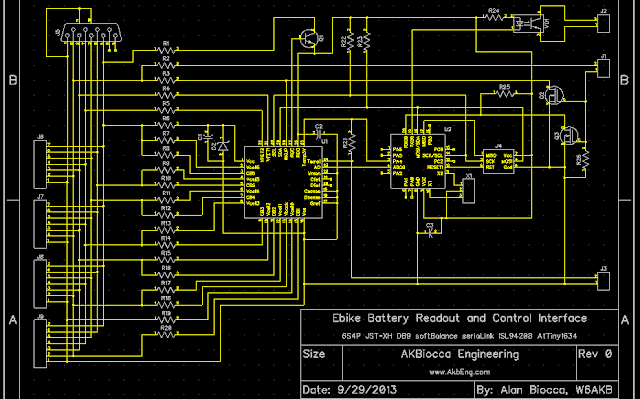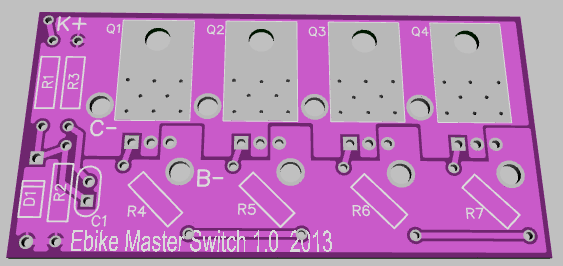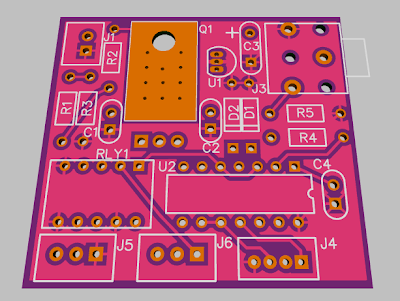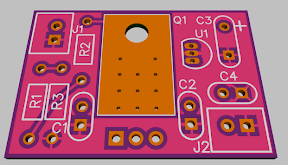Alan B
100 GW
This thread is for people interested easy ways to design PC (printed circuit) boards, specifically using DipTrace software and submitting boards for low cost online PCB manufacture to places like www.oshpark.com.
It is NOT a thread for bashing or arguing about which is the "best" Electronics CAD software, though comparisons of specific features might be useful to those trying to understand what DipTrace is good for, as well as it's limitations. So let's not get caught up in what is "best" (which is undoubtedly some high end package we cannot afford at home), but instead in what's useful for our purposes. If you want to argue about what is the "best" then open a new thread in the toxic area and have at it.
So, if you are using (or have used) DipTrace, please join in here and let us know how it is working for you (or not and why), and maybe answer questions from others who are considering it, or trying to learn it.
If you are interested in DipTrace, it is certainly best to search the web first but if you don't find an answer perhaps you can join in the discussion here and ask your questions.
There is a DipTrace support forum, that is perhaps a better place for really deep technical questions. Or perhaps that expertise will develop here.
For those who don't know what DipTrace is, it is an Electronics CAD package that includes schematic capture and PC board layout. It is commercial but has free versions with fairly useful limits, and a graded price schedule so you can buy more capability if you need it, and easily add to it later without cost penalty. So the price varies from zero on up depending on your needs. This type of detail changes with time so it should be obtained from their website, http://www.diptrace.com. It is a fairly low price package, as an example presently prices start at $70 for a license that allows 300 pins, two signal layers, no board size limit, has autorouting, etc, and this allows commercial use (the same limits as the free version but allows commercial use). So you can start for free, and then if you decide to sell your invention you can license the package, but if your not selling your stuff you can continue using the free license, it does not time out. For me this is good to learn the tool at no cost and do some projects, without a major cost barrier if I decide to go further.
Most of my ECad tool experience has been with ExpressPCB, which is free and easy to learn but only allows you to send boards to their board house, which is convenient but not always cost effective. So I was looking for something more flexible that would allow me to send boards anywhere (such as OSH Park which has a good deal on low cost boards). I tried FreePCB for a few boards, which works okay but is really basic, having no schematic capture or autorouting, and I wanted more. I very briefly tried KiCad (which is open source which I really like), but it was difficult to learn and I had some problems with it. I looked at Eagle which is probably the most popular low end commercial package, and decided the learning curve was steeper than I wanted to tackle at this time. I heard about DipTrace and reports that it was fairly capable and yet quick to learn, and I chose to try a few projects in it. I'll probably learn Eagle later on, but for here and now I'm focussing on DipTrace.
I'll say more about my current experience with DipTrace later on down the thread.
So who is using or considering DipTrace? How's it going? What is it doing for you?
It is NOT a thread for bashing or arguing about which is the "best" Electronics CAD software, though comparisons of specific features might be useful to those trying to understand what DipTrace is good for, as well as it's limitations. So let's not get caught up in what is "best" (which is undoubtedly some high end package we cannot afford at home), but instead in what's useful for our purposes. If you want to argue about what is the "best" then open a new thread in the toxic area and have at it.
So, if you are using (or have used) DipTrace, please join in here and let us know how it is working for you (or not and why), and maybe answer questions from others who are considering it, or trying to learn it.
If you are interested in DipTrace, it is certainly best to search the web first but if you don't find an answer perhaps you can join in the discussion here and ask your questions.
There is a DipTrace support forum, that is perhaps a better place for really deep technical questions. Or perhaps that expertise will develop here.
For those who don't know what DipTrace is, it is an Electronics CAD package that includes schematic capture and PC board layout. It is commercial but has free versions with fairly useful limits, and a graded price schedule so you can buy more capability if you need it, and easily add to it later without cost penalty. So the price varies from zero on up depending on your needs. This type of detail changes with time so it should be obtained from their website, http://www.diptrace.com. It is a fairly low price package, as an example presently prices start at $70 for a license that allows 300 pins, two signal layers, no board size limit, has autorouting, etc, and this allows commercial use (the same limits as the free version but allows commercial use). So you can start for free, and then if you decide to sell your invention you can license the package, but if your not selling your stuff you can continue using the free license, it does not time out. For me this is good to learn the tool at no cost and do some projects, without a major cost barrier if I decide to go further.
Most of my ECad tool experience has been with ExpressPCB, which is free and easy to learn but only allows you to send boards to their board house, which is convenient but not always cost effective. So I was looking for something more flexible that would allow me to send boards anywhere (such as OSH Park which has a good deal on low cost boards). I tried FreePCB for a few boards, which works okay but is really basic, having no schematic capture or autorouting, and I wanted more. I very briefly tried KiCad (which is open source which I really like), but it was difficult to learn and I had some problems with it. I looked at Eagle which is probably the most popular low end commercial package, and decided the learning curve was steeper than I wanted to tackle at this time. I heard about DipTrace and reports that it was fairly capable and yet quick to learn, and I chose to try a few projects in it. I'll probably learn Eagle later on, but for here and now I'm focussing on DipTrace.
I'll say more about my current experience with DipTrace later on down the thread.
So who is using or considering DipTrace? How's it going? What is it doing for you?








